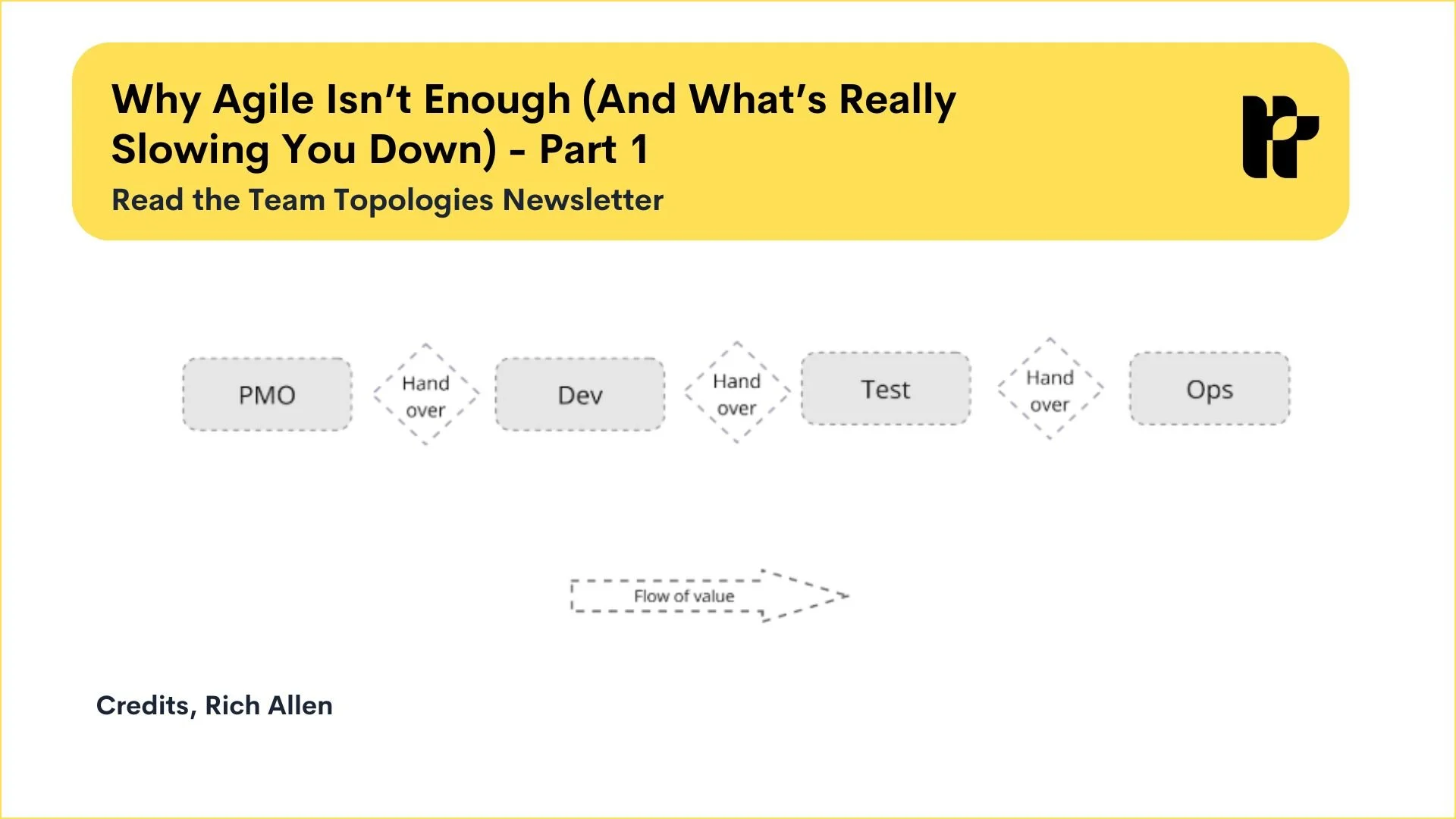Newsletter (OCTOBER 2024): Ready to Transform Development with Platform-as-a-Product Approach?
Organizations that adopt a "platform as a product" approach can fundamentally transform and accelerate the value realization from their digital product development. With the move to Product Operating Models, aka Project-to-Product transitions, more and more leaders realize the importance of sound platform engineering strategy and approach.
We see many organizations struggle in this context with two major challenges:
Retrofitting the "gift from their past", in other words trying to fit into a new paradigm and strategy the things they used to call "platforms"
Understanding that there is no one platform, but rather layers of platforms, incl. treating the infrastructure as a layer in their platform model and strategy.
In a Team Topologies context a "platform" is a means to reduce the cognitive load and enable substantial autonomy of the teams consuming them, while accelerating flow of value to the final customers.
Importantly, teams consuming the platform can also be developing a platform in turn. For example, the teams building observability services consume an infrastructure platform. Therefore the infrastructure should also adop a Platform-as-a-Product approach, focusing on simplifying the teams' experience by reducing cognitive load and promoting self-service, allowing faster flow of value without tickets or requests.
This strategy aligns with the recently published Platform Manifesto, initiated by Manuel Pais, which emphasizes creating user-friendly internal platforms that reduce cognitive load while enabling self-service capabilities. By prioritizing the user experience, teams can break down silos and enhance collaboration, fostering a more agile and efficient environment.
Learn how a team-of-teams can shape your strategy with platform engineering.
A key concept in this approach is the Thinnest Viable Platform (TVP), which focuses on addressing one specific issue—like simplifying Helm charts—rather than trying to tackle multiple challenges at once. It could be treated like a product on its own.
This targeted strategy not only fosters effective and iterative platform evolution but also ensures that developers remain engaged over the long term. After all, building a platform is an ongoing journey that adapts to the organization’s changing needs.
In this context, it is also important to note that the people building platform services are also considered "developers" and need the same or comparable user experience as the developers of applications.
As Abby Bangser highlights, treating platforms as internal products empowers development teams to leverage shared resources effectively, minimizing frustrating dependencies. Similarly, Matthew Skelton emphasizes the need for well-defined internal services that teams can rely on, which boosts both productivity and collaboration.
To further enhance this structure, the Team Topologies model, as noted in the ThoughtWorks Tech Radar (Vol. 22), encourages splitting platform teams into enablement teams, core "platform within a platform" teams, and stream-focused teams. This division accelerates development and promotes cross-functional collaboration, ensuring the platform evolves to meet the needs of developers while aligning with broader organizational goals.
Moreover, the concept of creating "golden paths," as pioneered by leaders like Netflix, Spotify, and Google, plays a crucial role in this transformation. These golden paths focus on enhancing the developer experience and have led many organizations to intentionally build internal developer platforms, placing developers front and center in the software delivery process.
Manuel Pais & Matthew Skelton have created a video-based course focusing on modern platform-as-a-product practices. The course covers why it's crucial to treat (internal) platforms as any other product, understanding its value proposition, its customers, and the platform adoption lifecycle.
Do you want to prioritize higher value outcomes than focus on lower value internal processes? Talk to us.
What’s Coming Up Next?
We are constantly on the lookout for events related to Team Topologies and the principles it embodies. Check all of the upcoming ones in our events section and do let us know if you missed any.
Codemotion Conference Milan 2024 - Team Topologies Masterclass with Manuel Pais
KanDDDinsky 2024 - Collaborative software design for team cognitive load
Flowtopia 2024 - Bureaucratic organizations: where products go to die
Masterclass: 2 dias com Manuel Pais, co-autor de Team Topologies - Oportunidade única!
Have we missed an event around Team Topologies? Let us know.
Team Topologies Beyond the Book
There are are over 500 companies out there that have already used Team Topologies to accelerate their path to fast flow. We are in the process of documenting that and here are a bunch of our best case studies that focus on two pain points or journeys that are top of mind for a lot of our partners:
Rebuilding and scaling product development at Docker using Team Topologies
Team Topologies at Footasylum - Platforms, Flow, and Wardley Mapping
Organizational evolution for accelerating delivery of comparison services at Uswitch
If you'd like to share your experiences or need assistance, please don't hesitate to get in touch.
Join the Community
Join the Team Topologies Community, a free space launching in autumn 2024, to connect with peers and experts on modern team-of-teams practices like Agile, DevOps, and Platform Engineering. Sign up now to stay updated and be part of this transformative movement.
We are happy to enrich the practice of Team Topologies with new ideas and best practices. This is why the community plays a crucial role in ever-evolving. A warm welcome to our newest members:
If you're passionate about Team Topologies and want to become an advocate, we would love to have you join us. Or, if you have a story to share, we would be honored to feature it on the website.
Was this newsletter useful? Please share your thoughts on how we can make it better. Send us an email.
If you'd like to share your experiences or need assistance, please don't hesitate to get in touch.












